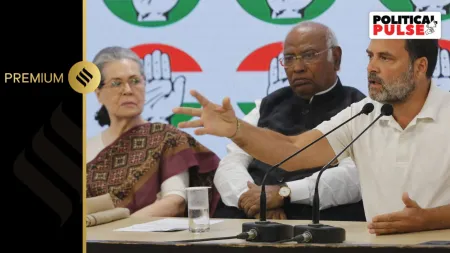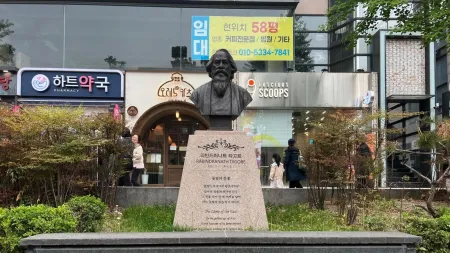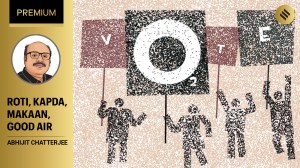- India
- International
Government should back CJI on idea of a Court of Appeal
The CJI proposed the idea of a Court of Appeal which would be a beginning of the end of an over-burdened and choked Supreme Court and the restoration of a true Constitutional Court .
 Chief Justice of India TS Thakur
Chief Justice of India TS Thakur
The subject cannot be dealt with in a single column, nevertheless I think I should make a beginning.
The break down of the justice-delivery system is happening before our eyes. Ask any judge of any court or ask any lawyer, and they will tell you that it is only pretence that is keeping a smile on the faces of judges.
The numbers tell the story. Against 1,065 approved posts of judges in the High Courts, only 633 judges are in place. In the subordinate courts there are 4,432 vacancies (in 20,502 posts). Pendency of cases at different levels was:
> Subordinate courts: 2,64,88,405 (Dec 2014)
> High Courts: 41,53,957 (Dec 2014)
> Supreme Court: 59,468 (Feb 2016)
Insufficient judges, unwilling lawyers
The problems of the justice-delivery system have been discussed, debated and dissected so many times, and in so many reports, that if any one suggests another “study” before some obvious reforms are done, he deserves to be shot! The core of the problem is that we have too few judges: just 12 judges per million population. We need more judges. The demand is there, but where is the supply? On top of that we have a system of judges appointing judges that, in the view of some, has turned the Constitutional provision on its head. The result: there is vehement disagreement between the Judiciary on the one hand and the Executive/Parliament on the other on the manner of appointment of judges.
Few able and successful lawyers are ready to accept judgeship. The only sure source of recruitment to the High Court is from the rank of District Judge, but long years in the lower judiciary leave very few unscathed by truth or allegations. In desperation, a certain number of judges have been appointed from time to time, but the quality of appointments has been uneven.
The justice-delivery system requires a root and branch reform. We can start anywhere, but if we want quick and visible results it is better to start at the top. That is why the proposal for a National Judicial Appointments Commission (NJAC) and the new proposal for a National Court of Appeal (a level between the High Courts and the Supreme Court) have gained traction.
Appellate jurisdiction

Why a Court of Appeal? For a number of reasons — insufficient number of judges, workload, proliferation of laws, complex disputes, new jurisdictions etc — the quality of judgements delivered by the High Courts is not high or even. More and more judgements and orders are appealed against. In the case of new jurisdictions conferred on the High Courts, there is a genuine need to provide one court of appeal both on facts and law. Today, appeals from the High Courts as well as from various Appellate Tribunals land up in the Supreme Court. The earlier restraints of seeking a certificate or leave to appeal from the High Court have been done away with. Article 136 of the Constitution, which is strictly a provision to seek special leave to appeal, has virtually become a regular provision for appeal. The only gatekeeper is the Supreme Court which dismisses most SLPs at the stage of admission, but it has to hear the case before it dismisses it. Nevertheless, the docket keeps growing; so does the backlog; and the Supreme Court has become a court of correction. The judges have no choice but to sit in benches of two judges.
If the status of the Supreme Court must be restored to that of a truly Constitutional Court, it must shed most of the work it does now — and create another competent forum that will take over that work. Hence the case for a Court of Appeal. Nearly 80 per cent of the SLPs now heard by the Supreme Court — pleas for bail, for eviction or protection from eviction, for appointment of arbitrators, for interim orders; appeals from criminal cases or civil suits or interim orders; Service, labour, matrimonial and land acquisition cases etc — can be heard by the Court of Appeal, and the outcome will be just as satisfactory as a judgement rendered by the Supreme Court.
We have enough distinguished judges in the High Courts who can be appointed to the Court of Appeal until they attain the age of 65 — same as a Supreme Court judge. Five regional benches of the Court of Appeal will require about 40 judges and they will be happy and proud to serve for three more years.
Restore constitutional court
This will also pave the way for reform of the Supreme Court. A smaller court with no more than 20 outstanding jurist-judges; deeper selection from among judges, jurists and senior lawyers; benches of not less than three judges; the Constitution Bench as a regular feature; more time devoted to a case; quicker disposal; and well-considered judgements that will declare the law for the whole country will be some of the benefits that will accrue, thanks to the reform.
Concurrently, the issue of NJAC should be resolved, paving the way for appointment of the best available talent to the higher judiciary.
The Chief Justice of India proposed the idea of a Court of Appeal, but I was dismayed when the Government, too quickly and abruptly, shot it down. I hope the idea is still alive and will be debated. In addressing the complex matter of delivery of justice, the idea would be a beginning of the end of an over-burdened and choked Supreme Court and the restoration of a true Constitutional Court. Other reforms should follow quickly.
EXPRESS OPINION
More Explained
May 09: Latest News
- 01
- 02
- 03
- 04
- 05









































